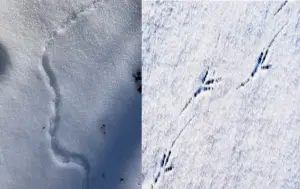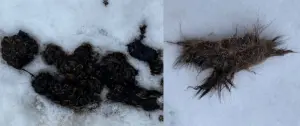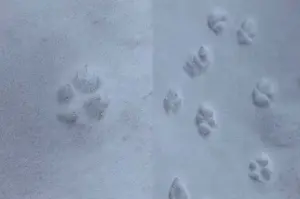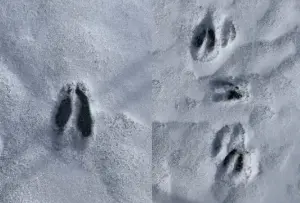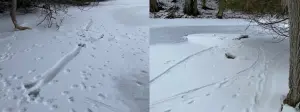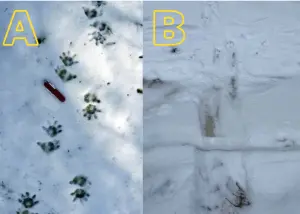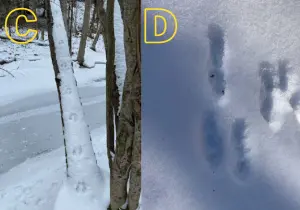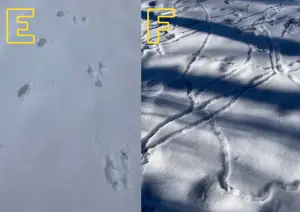Reading Stories in the Snow
Reading the Stories in the Snow!
By Terrie Cooper, Community Conservation Director
Winter is my favorite time of year when the secret lives of animals are revealed in their “stories in the snow”. In Wisconsin there are only three mammals that are true hibernators in winter (woodchucks, ground squirrels and bats). The rest of Wisconsin’s mammals, though they may sleep for long periods of time, eventually must come out to look for food and leave behind their stories in the snow.
- Who was here?
- What were they doing?
- Were they alone?
- Where are they going?
- What are they eating?
- Where are they sleeping?
Learning how to read these stories in the snow is quite easy to do when you learn a few simple identification tips. Let’s start.
1. Look at the overall pattern of the tracks and imagine what size and shape the animal must be to make a pattern like this.
2. Next think about the type of habitat are you in, a forest, field, backyard, streambank? This will be a big clue to helping you narrow down what animal might live here and whose tracks you might be seeing.
3. Can you tell the direction the animal is moving? Follow the tracks to see if you can find signs of food they are eating or where they are sheltering. Perhaps you will be lucky and find scat or tufts of fur and blood which can tell you a lot about who is eating whom. Here’s otter scat I found with shell fragments and fish bones in it and further along the way, I found tufts of otter fur and blood, and later saw a bald eagle roosting nearby. Would a bald eagle really hunt an otter for dinner? I’m not sure how this story ended.
So now let’s use the tips above and start reading the stories in the snow of the most common animals you will find this time of year on our Land Trust Nature Preserves.
These waddlers have tracks that are spaced apart and when the track is good you can see the tiny fingers on their paws. |
Now let’s put your detective skills to work and read some of these fun stories in the snow that I discovered after our first few snowfalls this year.
And now you’re on your own – answer key is down below, but no peeking!
Answer key:
A. opposum
B. otter slide
C. squirrel climbing tree
D. squirrel right, rabbit left both travelling south
E. coyote on left, squirrel on right both travelling north
F. Snow snakes or Meadow vole tunnels?
Want to learn more? Check out…

